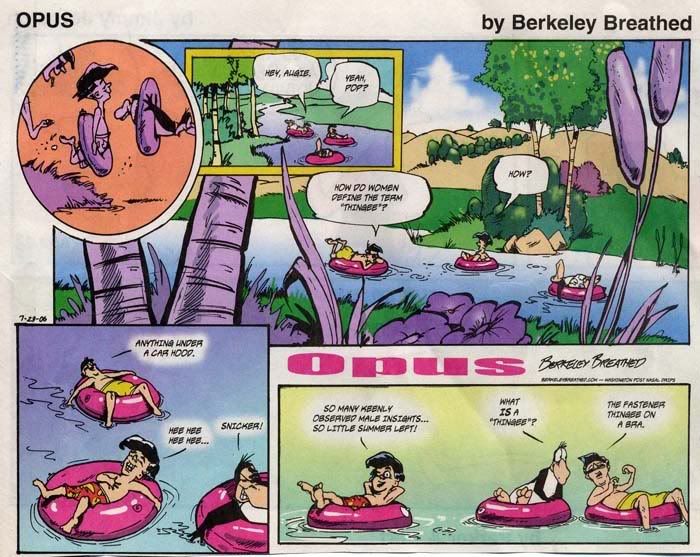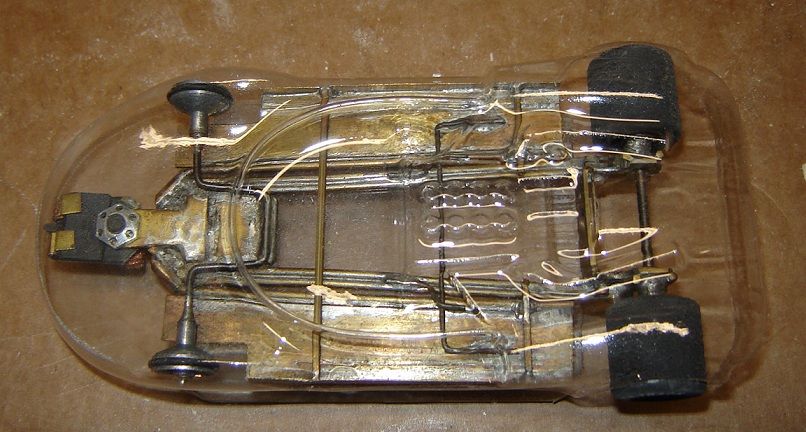Well, not quite Steve...
If you all permit, allow me to quote from the text I wrote as the introduction to Edo's Thingie photo exhibition in Italy, a few years ago. Just a reminder of where the Thingie comes from, historically speaking... (this was the draft version, so there are still a few XXX/TBD)
Don
What is a Thingie?
A Thingie is an abomination, a betrayal of everything sacred in model car racing. At least that’s how it started out in the early days of the hobby.
Model racing cars were supposed to duplicate real cars, often to within 1/16 inch of the exact scale dimensions. When they didn’t, the cry went out from the defenders of the faith: “What’s that god-awful thingy?” This started on some of the early “magwinder” style dragsters, which made no pretense of resembling a real car, and was soon applied to certain road racers as well: typically a sports car like a Maserati Birdcage with huge slicks sticking out of chopped wheel wells and a purple paint job,
Hence, Thingies.
As early as 1964-65, the slot car manufacturers began to produce their own Thingies, although they didn’t use that name. They were called dream cars, or outlaws, or bandits. They were often based on real show cars of the time, to give a veneer of respectability – from the 1950s Firebird, to the later Manta Ray and Astronaut. Some of them actually looked like show cars, and others just borrowed the name.
The aim was two-fold. First, they were cool, and immediately appealed to teenage boys, the core of the mass slot racing market in the boom years of 1965-66. Only a few youngsters may have been stirred by a carefully detailed scale Birdcage or Lola T-70. But just about any 13-year-old boy could look at a Classic Astro V and say, “Hey, that’s cool”.
Second, performance. A low, wide slot car will handle better than a high, narrow car, all things being equal. And of course the Thingie could be made as wide and low as the designer wanted, without worrying about scale dimensions: in the early days they had huge slicks for higher top speed, but rear tires quickly evolved towards the low, wide “steamroller” type for greatly improved handling.
Like other outlaw movements, the Thingie soon became its own rallying cry, defended by adults and not just kids. They were also adopted by the pure performance crowd, who claimed that slot racing was an entity in and of itself, and not just a copy of real race cars – since in any case there was no gas engine and no driver inside the car!
For many youngsters, a commercially made Thingie, almost always in “ready to run” (RTR) form, was the easiest entry into slot racing – instant gratification, for the eyes and for the thumb. Some of these designs were just tossed-off, others were more carefully styled, but almost all used cheap and easy to produce clear vacuum-formed bodies, instead of the more expensive injection molded bodies used in plastic kits and scale slot cars.
Companies like Classic and GarVic quickly found their niche and made almost nothing but Thingies. But even the established model companies like Monogram and Cox, seeing the impressive sales figures, soon entered the field. In 1966, Cox introduced the legendary “La Cucaracha”, with a well engineered “iso-fulcrum” chassis (an invented word, but one that entered the vocabulary of slot racing) and a unique bright orange polypropylene (“Tupperware”) body. For a short period, this car would revolutionize slot racing, and was one of the all-time best-sellers, just behind the Classic Manta Ray.* The “Cuc” concept was copied by companies worldwide, from Switzerland to Brazil.
Meanwhile some performance-oriented adults were also exploring ultimate slot machines. In Detroit, automobile designer Larry Shinoda was pulling his own Thingie bodies with outlandish names, like XXX. They were designed for pure performance, low and with no limits on width, but they also had a real style, as could be expected from the designer of the XXX. Out West, near San Francisco, John Chotia?? was doing the same thing, with bodies that were even more stark and aerodynamic – prefiguring the “wing” bodies that would later become the standard in high-end commercial slot racing (cars in the unlimited class cover a 155 foot, six-turn track in 1.4 seconds!).
But at the same time this also sounded the death knell of the Thingie. By 1968 not only had real racing cars and their tires become much lower and wider, but semi-scale “handling” bodies had become the norm in competitive slot racing, negating the traditional advantages of the Thingie. Plus, the fad was over, commercial tracks were disappearing by the hundreds, and there was no longer a mass market for slot cars. But the Thingie was a mass market slot car par excellence.
The Thingie went into limbo.


































